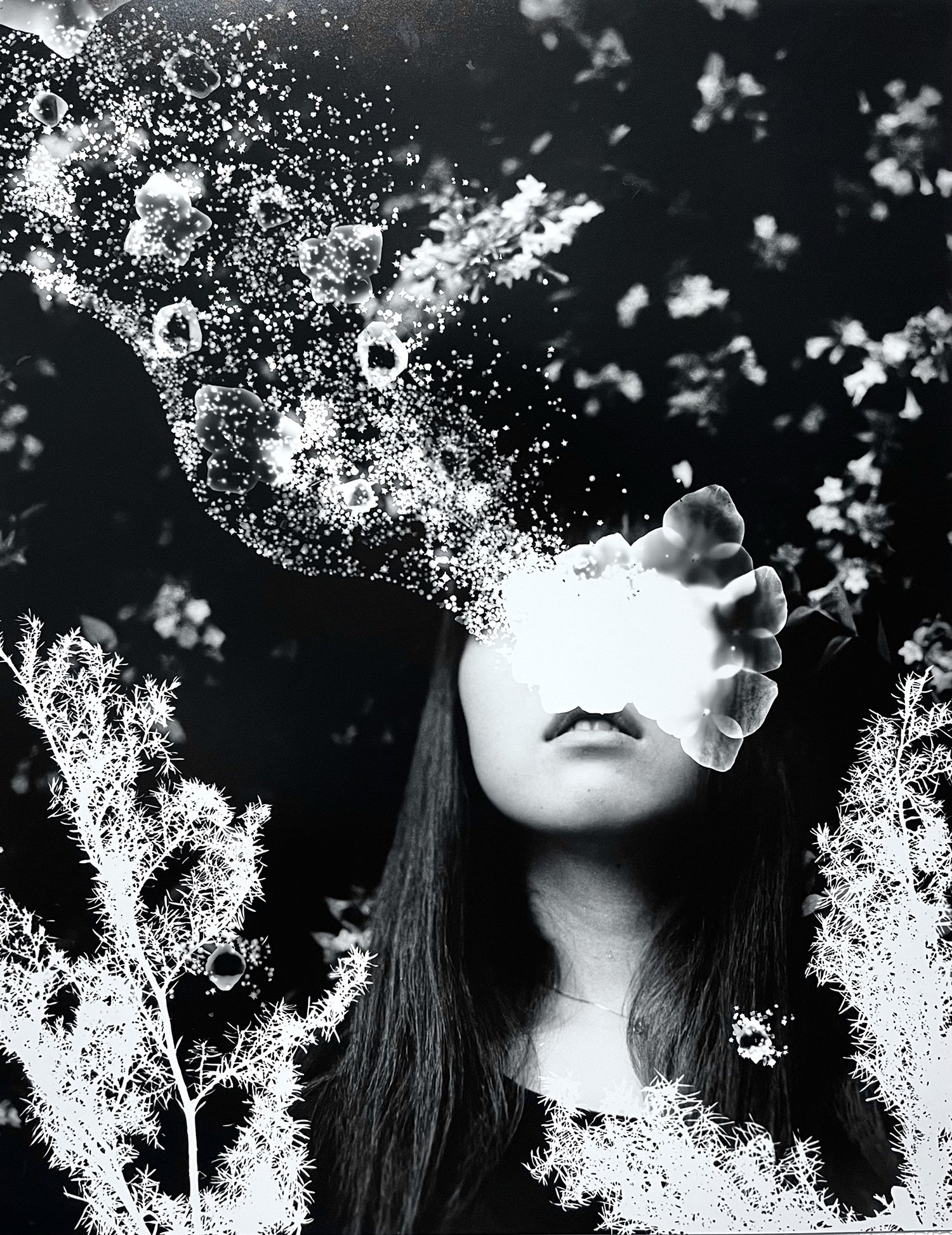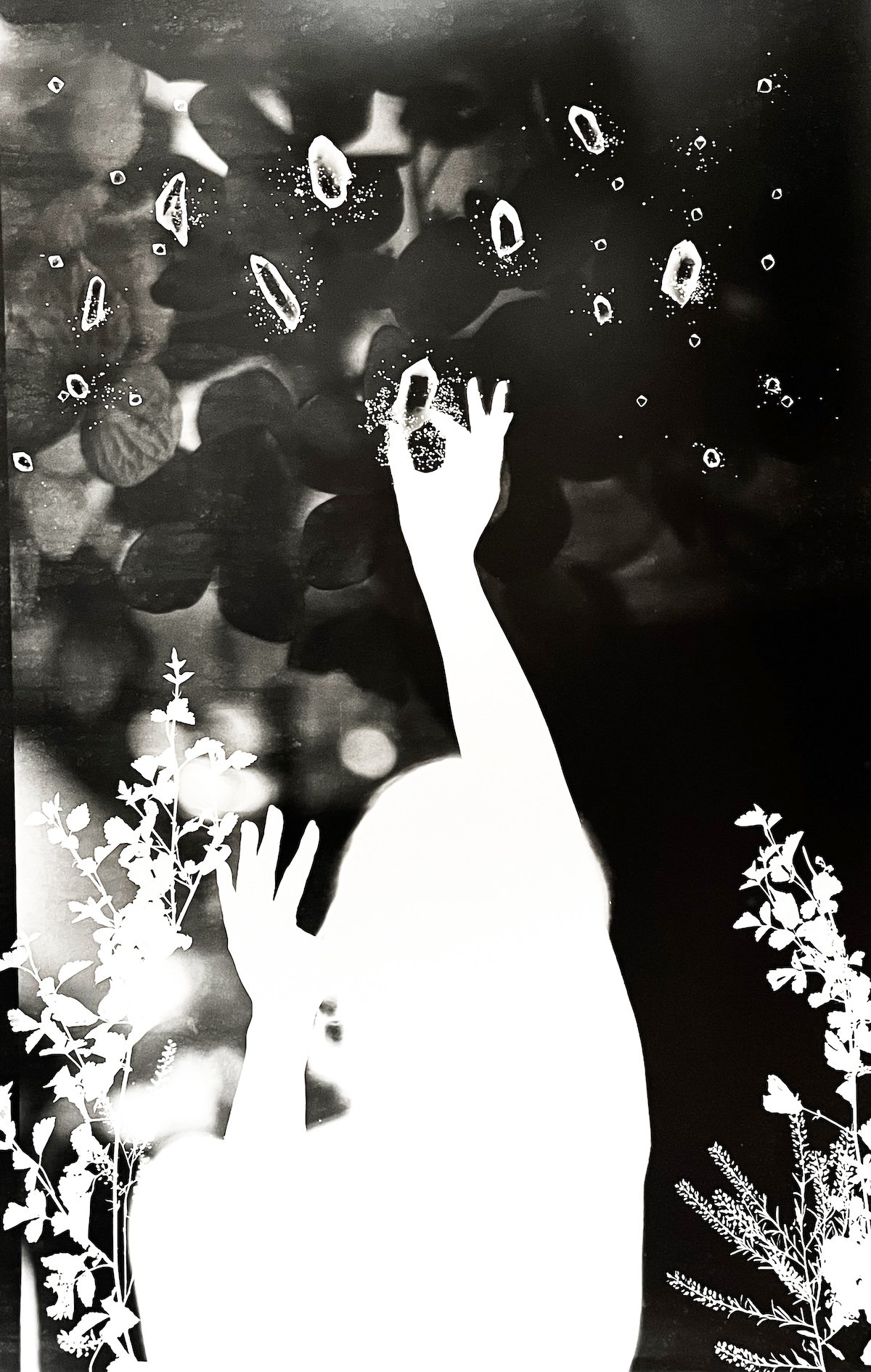Hitoki Koyama
Can you tell us about your artistic journey and what inspired you to become an artist?
I commenced taking film photography in 2013 and initiated creating in the darkroom from 2022.
There wasn't a specific moment when I decided to become an artist; I naturally drew pictures since my early childhood. Although I grew up with four siblings, I often felt a sense of solitude.At night, I would gaze at the stars from the balcony and craft stories using my imagination. Art is my closest companion, a reflection of myself, and one of my life activity of my life for survival.
What themes or concepts do you explore in your artwork, and why are they important to you?
I create art to illuminate the concept of ""life."" It also signifies the desire to capture the unique and irreplaceable essence of each individual. The importance of this theme to me seems to be rooted in my experiences of rejecting life during my early years.
This pursuit of mine is inseparable from the cultural background of the East. In Japan, time is perceived not as a linear progression but as a cyclical process, that is to say, a continuous and repetitive advancement. Everything exists, transforms, and disappears. Disappearance doesn't mean non-existence; it is a state of ""zero,"" giving rise to a cycle.
Unconsciously, I have lived in Japan with this foundation of the Eastern philosophy.
A world where nature is personified, and the existence of ""eight million gods"" is a natural concept. Stones, stars, plants, and us, all living entities together.
Even if we share the same elements, exist at the same time, and belong to the same species, none of us is the same. I want to explore and depict what it means to be alive, including myself. Art, for me, is not just a visual expression; it is a philosophical exploration into the essence of existence.
Could you describe your creative process, from ideation to execution? Are there any particular techniques or mediums you prefer?
Ideas emerge in the fleeting moments of everyday life, and I make sure not to forget them by jotting them down in my notebook. Whether recreating those images in the darkroom later or spontaneously developing guided by the inspiration of the day, the process varies.
I particularly favor the technique of photogram, creating images directly on photosensitive paper without using a camera. For materials, I envision stars and the universe, often using minerals, sand, plants, and more. Importance of my artworks is a random phenomenons which appears in processing development photographs. Therefore, the work will never look the same twice.
This technique is known recognized in art history through artists like Christian Schad (1894-1982) and Man Ray (1890-1976).
How do you find inspiration when faced with creative blocks or challenges in your work?
Not just knowledge, I believe that there is life in behind of creative activity. Therefore, I engage in activities unrelated to art, such as taking walks and reading, as I find life experiences essential. Sometimes, words from followers on social media trigger my curiosity, leading me to gain insight while researching. It's not about doing something extraordinary; it's about paying attention to small sounds, lights, and voices.
Can you highlight a specific piece of your artwork that holds special significance to you and share the story behind it?
I hold a pivotal experience that carries a special significance for me, serving as the catalyst for my current artistic style.
The origin of the works I am presently crafting in the darkroom traces back to a solo exhibition I hosted in Japan in November 2021. While I have been creating portrait photographs since 2015, it has been an exceptionally invaluable endeavor. It resembled an ""secret collaboration"" between the subject and me, where I listened to the subject's life story, shared my own background, and collaboratively constructed pieces. Through those creative processes, I could explore the meaning of life and its contours. Simultaneously, I was deeply engrossed in capturing spontaneous snapshots of towns and landscapes. However, these impromptu shots, captured instinctively before conscious thought, I wasn't recognize as ""artworks"" at first time.
When deciding to include both portrait pieces and street photographs in the solo exhibition's composition, initially, I believed these seemingly unrelated styles wouldn't intersect. However, when curated within the same exhibition space, it felt like ""thin threads"" intertwining and connect the two.
""The portrait pieces and snapshot photographs are somehow connected at a profound level.""
This recognition dismantled the classification within the works, leading me to interweave the ""thin threads"" that emerged between portrait and street photography. In the pursuit of giving shape to this inspiration, I constructed a darkroom and began using techniques like photogram and solarization to breathe life into the artworks.
How do you see your work evolving in the future? Are there any new techniques or mediums you're eager to explore?
I anticipate evolving to seek more diverse light in the future. There is a possibility that it may become more abstract, and there might be an increase in works that incorporate corporeality as a singular existence. As a new technique, I am interested in expressions rooted in Japanese traditional handmade paper(Washi)and Eastern philosophy.
What role does your personal experiences or background play in influencing your art? Are there cultural or social aspects that often find their way into your work?
I believe that creating art is a transformative process of subjectivity. My personal experiences are serving like filters.Everything in my works passes through the singular material of ""my memories and original experiences"", to be given meaning and expressed like constellations.
While society is a vast series, elements one by one are the gathering of small lives when you focus closely.In my opinion, both minorities and majorities are just parts of the social structure, shaping and influencing the situation.I pay attention to those easily overlooked details, reflecting them onto my artwork.
Are there any artists, past or present, who have had a significant influence on your artistic style or philosophy?
My inspiration comes from the starry night skies and ores I gazed at in my childhood.This has been significantly influenced by the works of a Japanese poet and fairy tale writer, Kenji Miyazawa (1896-1933). His works have been a trigger for me to contemplate the true meaning of happiness and to be aware of a sense of ""the galaxy"" within myself.
Additionally, I have been greatly influenced by a German author of children's literature, Michael Andreas Helmuth Ende (1929-1995).
How do you balance the commercial aspects of being an artist with staying true to your creative vision?
I strive to be as true to myself and relentlessly pursue what I genuinely desire as possible as I can.
The phenomena occurring in the darkroom always astonish me, and I am pleased to see what appears in my works through processes like experiments.Even if I don't have enough time, I try to enter the darkroom when inspiration strikes me.
Can you share upcoming projects, exhibitions, or events where our audience can experience your work?
I post my artwork on my official website and Instagram.
Moreover, I am creating new pieces for a solo exhibition and art book fair scheduled for April 2024 in Japan.
My activities are mainly in Japan, but I would like to spread my scope of endeavor to be seen by more audiences.
Instagram: @koyamahitoki3
Official Website: https://hitokikoyama.com










